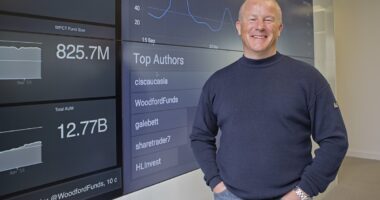Share this @internewscast.com
Topline
Nearly a dozen states in the northern U.S. may have an opportunity to see the northern lights Sunday as geomagnetic storms will likely disrupt Earth’s magnetic field over the next two days, according to the National Oceanic and Atmospheric Administration.
Forecasters said periods of “minor” geomagnetic storms are expected through Monday night.
Getty Images
Key Facts
NOAA forecasts auroral activity with a Kp index of four on a scale of nine for Sunday night, suggesting the northern lights will be more active and move farther away from the poles than usual and could be “quite pleasing to look at” for those in the right areas.
Periods of “minor” geomagnetic storms are likely Sunday and Monday because of “influences” of high-speed winds from a cooler, less dense spot on the sun’s surface, NOAA said.
Auroral forecasts for Sunday and Monday indicate a maximum Kp index near five for either night, according to NOAA’s three-day forecast, which shows the northern lights may become visible in parts of Wyoming, Iowa, New York, New Hampshire and Vermont.
Where Will The Northern Lights Be Visible?
The highest chance is forecast across northern Canada and Alaska, while a lesser opportunity is expected in northeastern Washington, northern Idaho, Montana, North Dakota, northern South Dakota, Minnesota, northern Wisconsin, Upper Michigan and northern Maine. (See map below.)
Sunday’s view line.
NOAA
What’s The Best Way To See The Northern Lights?
NOAA recommends traveling to a high vantage point away from light pollution between 10 p.m. and 2 a.m. local time. The agency said it’s best to find an area with an unobstructed view toward the north.
What’s The Best Way To Photograph The Northern Lights?
NASA and NOAA recommend using a tripod if using a smartphone or a regular camera while enabling a slower shutter speed and a focus set to the furthest possible setting. With a smartphone, NOAA suggests enabling night mode and disabling flash.
Key Background
The northern lights are expected to be more visible into early 2026 after activity reached a “solar maximum” in October 2024, according to NOAA and NASA. This peak represents an increase in solar events like solar flares and coronal mass ejections during the sun’s 11-year cycle, which are responsible for auroral activity. Electrons from these events collide with oxygen and nitrogen in the Earth’s atmosphere, causing them to become “excited” before releasing energy in the form of colorful, swirling lights.
Further Reading











